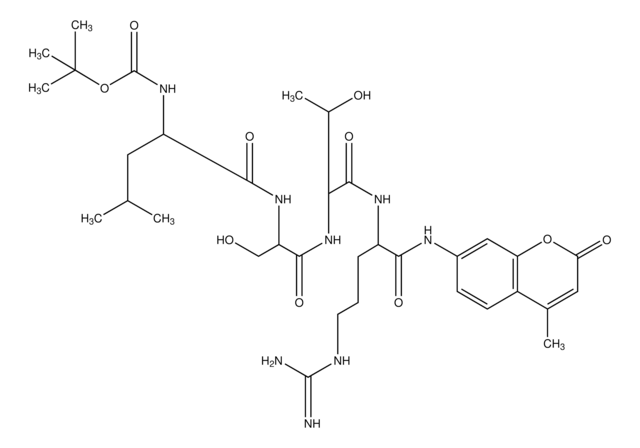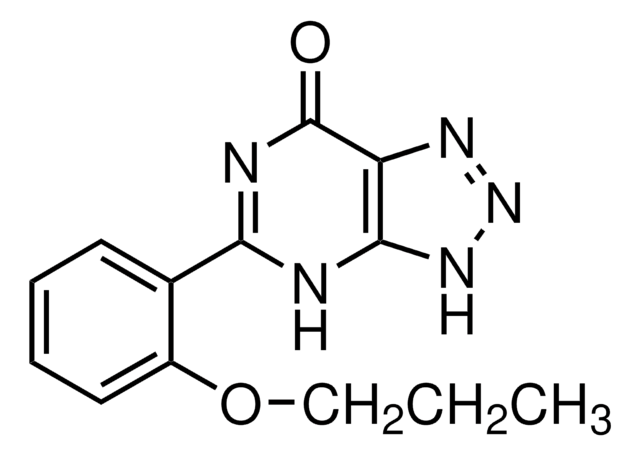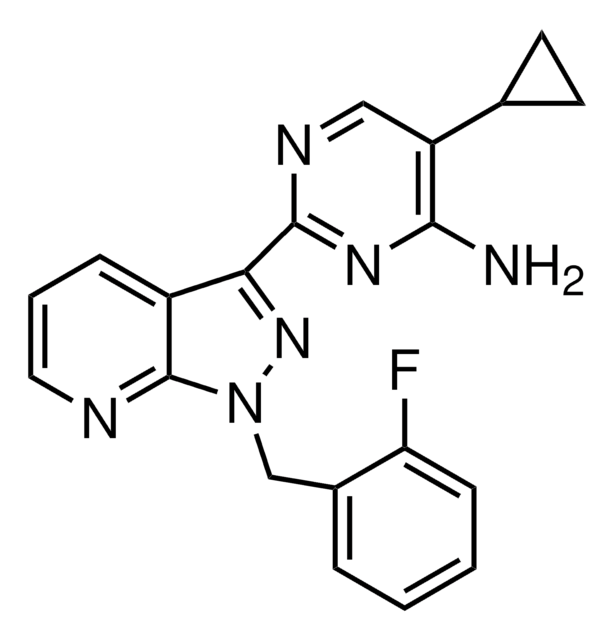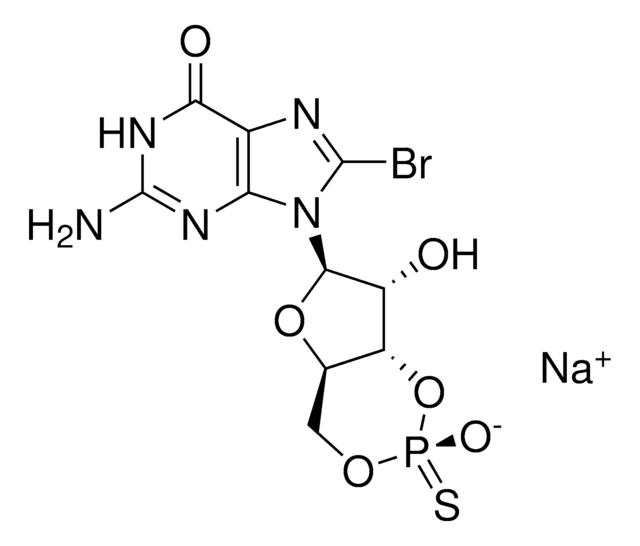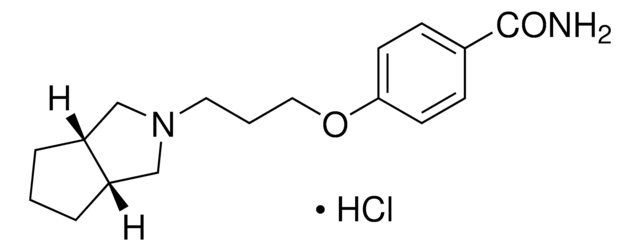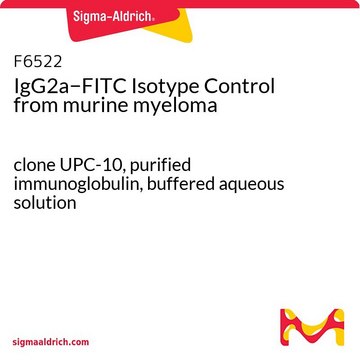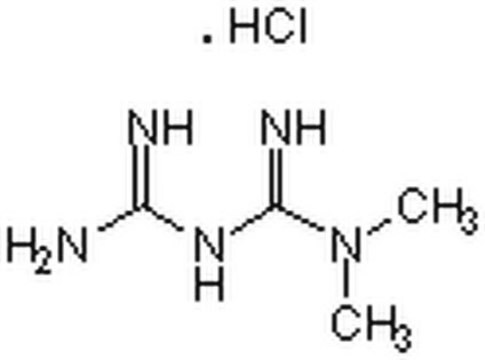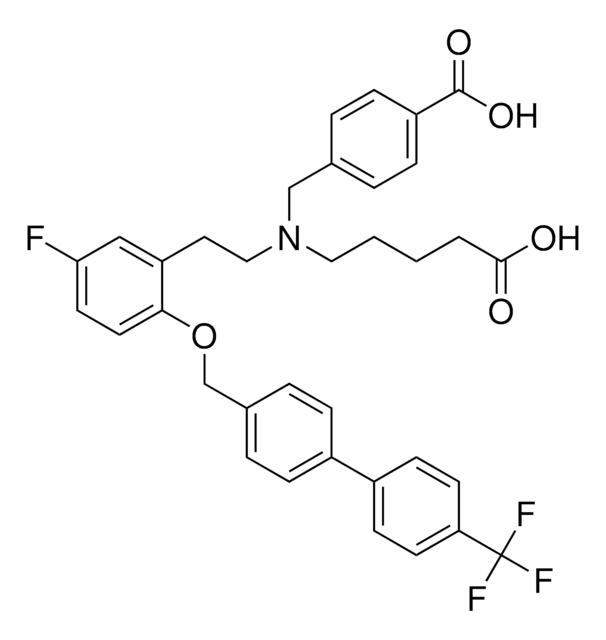SML1817
BCI-121
≥98% (HPLC)
Sinonimo/i:
4-(Aminocarbonyl)-N-(4-bromophenyl)-1-piperidineacetamide, BCI121
Autenticatiper visualizzare i prezzi riservati alla tua organizzazione & contrattuali
About This Item
Formula empirica (notazione di Hill):
C14H18BrN3O2
Numero CAS:
Peso molecolare:
340.22
Codice UNSPSC:
12352200
NACRES:
NA.77
Prodotti consigliati
Livello qualitativo
Saggio
≥98% (HPLC)
Forma fisica
powder
Colore
white to beige
Solubilità
DMSO: 20 mg/mL, clear
Temperatura di conservazione
2-8°C
Azioni biochim/fisiol
BCI-121 is a substrate-competitive SMYD3 inhibitor that reduces nuclear histone H3 lys4 di- and tri-methylation level (by 50%/H3K4me2 and 40%H3K4me3 in HT29 cells; 100 μM BCI-121 for 48 h), downregulates known SMYD3 target genes transcription, and selectively affects SMYD3-dependent proliferation of cancer cultures (46%/HT29 and 54%/HCT116 proliferation reduction; 100 μM BCI-121 for 72 h) with little antiproliferation efficacy toward low SMYD3-expressing cancer cells. BCI-121 targets SMYD3 via direct affinity interaction (kon 357.7/M/s; koff 4.23×10-3/s; KD=koff/kon = 11.8 μM) and effectively competes against histone for SMYD3 binding (%inhibition/[histone H4 peptide]:[BCI-121] ratio = 36.5%/1:1 and 51.0%/1:2.5).
BCI121 is capable of reducing the mesenchymal signature of MDA-MB-231 cells. It can also decrease their ability to invade in vitro and in vivo.
Codice della classe di stoccaggio
11 - Combustible Solids
Classe di pericolosità dell'acqua (WGK)
WGK 3
Certificati d'analisi (COA)
Cerca il Certificati d'analisi (COA) digitando il numero di lotto/batch corrispondente. I numeri di lotto o di batch sono stampati sull'etichetta dei prodotti dopo la parola ‘Lotto’ o ‘Batch’.
Possiedi già questo prodotto?
I documenti relativi ai prodotti acquistati recentemente sono disponibili nell’Archivio dei documenti.
Ryuji Hamamoto et al.
Cancer science, 107(4), 377-384 (2016-01-12)
Protein methylation is one of the important post-translational modifications. Although its biological and physiological functions were unknown for a long time, we and others have characterized a number of protein methyltransferases, which have unveiled the critical functions of protein methylation
SMYD3 promotes the epithelial-mesenchymal transition in breast cancer
Fenizia C, et al.
Nucleic Acids Research, 47(3), 1278-1293 (2018)
Tianjiao Lyu et al.
International journal of cancer, 146(6), 1553-1567 (2019-09-11)
Detachment of cancer cells from the primary tumor and formation of spheroids in ascites is required for implantation metastasis in epithelial ovarian cancer (EOC), but the underlying mechanism of this process has not been thoroughly elucidated. To mimic this process
Roberta Codato et al.
Scientific reports, 9(1), 17298-17298 (2019-11-23)
The coordinated expression of myogenic regulatory factors, including MyoD and myogenin, orchestrates the steps of skeletal muscle development, from myoblast proliferation and cell-cycle exit, to myoblast fusion and myotubes maturation. Yet, it remains unclear how key transcription factors and epigenetic
Alessia Peserico et al.
Journal of cellular physiology, 230(10), 2447-2460 (2015-03-03)
SMYD3 is a histone lysine methyltransferase that plays an important role in transcriptional activation as a member of an RNA polymerase complex, and its oncogenic role has been described in different cancer types. We studied the expression and activity of
Il team dei nostri ricercatori vanta grande esperienza in tutte le aree della ricerca quali Life Science, scienza dei materiali, sintesi chimica, cromatografia, discipline analitiche, ecc..
Contatta l'Assistenza Tecnica.
